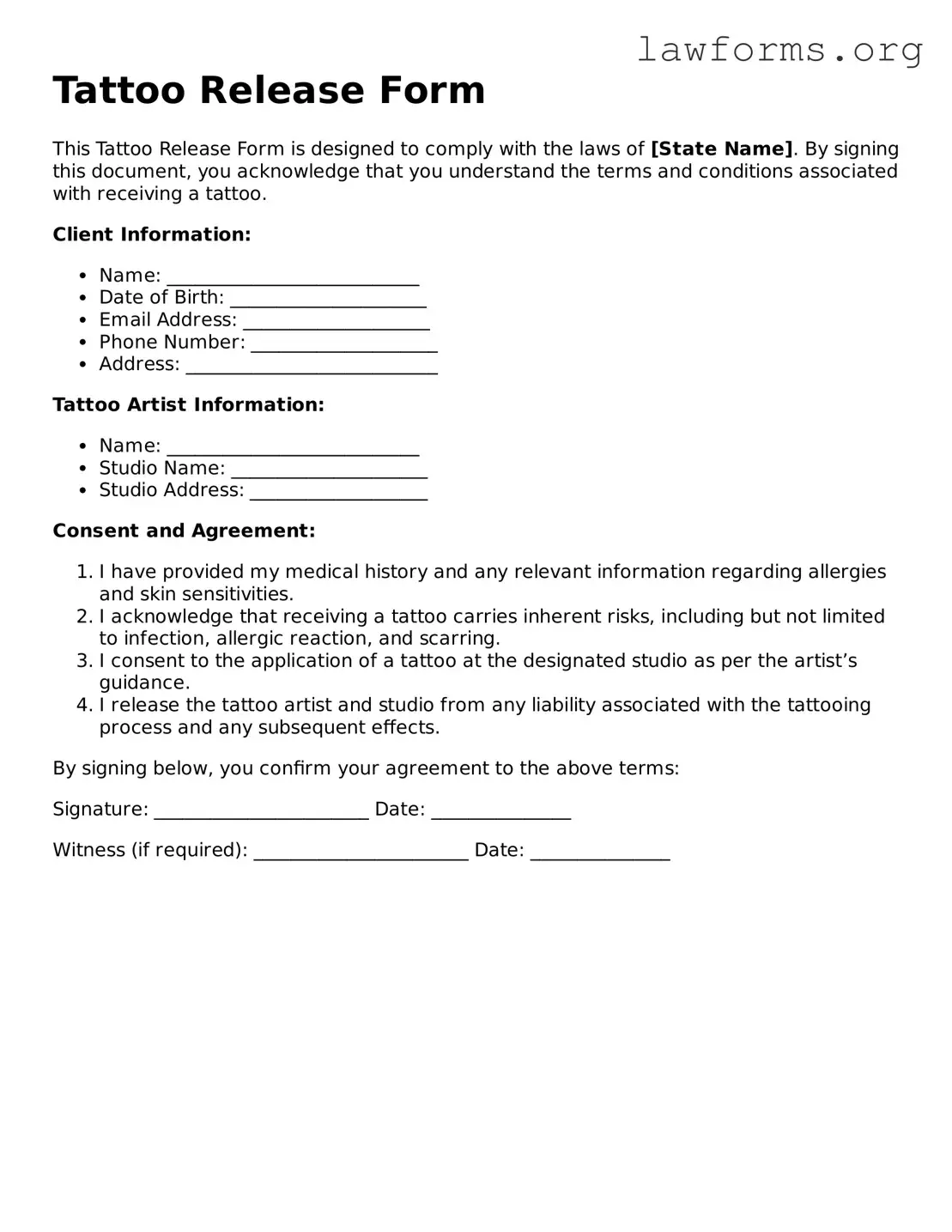Tattoo Release Form
This Tattoo Release Form is designed to comply with the laws of [State Name]. By signing this document, you acknowledge that you understand the terms and conditions associated with receiving a tattoo.
Client Information:
- Name: ___________________________
- Date of Birth: _____________________
- Email Address: ____________________
- Phone Number: ____________________
- Address: ___________________________
Tattoo Artist Information:
- Name: ___________________________
- Studio Name: _____________________
- Studio Address: ___________________
Consent and Agreement:
- I have provided my medical history and any relevant information regarding allergies and skin sensitivities.
- I acknowledge that receiving a tattoo carries inherent risks, including but not limited to infection, allergic reaction, and scarring.
- I consent to the application of a tattoo at the designated studio as per the artist’s guidance.
- I release the tattoo artist and studio from any liability associated with the tattooing process and any subsequent effects.
By signing below, you confirm your agreement to the above terms:
Signature: _______________________ Date: _______________
Witness (if required): _______________________ Date: _______________
